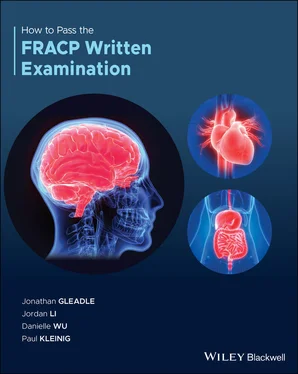ED may be a precursor of cardiovascular disease. Men with proven or suspected vasculogenic ED or multiple vascular risk factors, especially diabetes, should be screened for silent myocardial ischaemia with exercise electrocardiography, a coronary artery calcium score, or coronary CT angiography.
Lifestyle modifications are the first‐line therapy. Other treatment options include testosterone replacement therapy (TRT), PDE5 inhibitors, intracavernosal injection therapy, vacuum constriction devices (VCDs), intraurethral prostaglandin suppositories and surgical placement of a penile prosthesis. PDE5 inhibitors enhance blood flow in the corpora cavernosa. 60–65% of men who have ED, including those with hypertension, diabetes, spinal cord injury, and other comorbid medical conditions, can successfully complete intercourse in response to the PDE5 inhibitors. There is no evidence that currently approved ED treatments add to the overall cardiovascular risk in patients with or without previously diagnosed cardiovascular disease.

McMahon CG. Current diagnosis and management of erectile dysfunction. MJA 2019;210:469–76.
https://www.mja.com.au/journal/2019/210/10/current-diagnosis-and-management-erectile-dysfunction
11. Answer: A
Fertility preservation may be requested by women who experience disease processes or treatments that carry a risk of premature ovarian failure, thereby potentially extending their ability to have children. Treatments causing premature ovarian failure include alkylating chemotherapeutic agents, multi‐agent chemotherapy, ovarian radiation therapy, and sometimes pelvic surgery. Alkylating agents include nitrogen‐mustard agents such as cyclophosphamide, nitrosureas, and busulfan carry the highest risk of premature ovarian insufficiency, with increasing risk in a dose dependent manner. Other agents with alkylating like actions such as platinum containing agents also carry increased risk, as do other treatments for malignancy such as pelvic radiotherapy.
Counselling about risk of premature ovarian failure is recommended for women of childbearing age undergoing high risk treatments, and parents of children undergoing the same. The probability of premature ovarian failure following chemotherapy is dependent on individual ovarian reserve, which varies greatly between women. For prepubertal girls, ovarian tissue cryopreservation is most likely to result in successful outcome. In adults, this strategy is emerging in cases where there is an urgent indication to initiate treatment, leaving no time for oocyte or embryo cryopreservation. However, where treatment can be safely delayed, mature oocyte cryopreservation or embryo cryopreservation are currently the methods endorsed by the Clinical Oncology Society of Australia. Successful pregnancy rates are higher when larger numbers of oocytes are used, or where the donor is of younger age at the time of cryopreservation.

Donnez J, Dolmans M. Fertility Preservation in Women. New England Journal of Medicine. 2017;377(17):1657–1665.
https://www.nejm.org/doi/full/10.1056/NEJMra1614676
12. Answer: C
Hypogonadism is common in older age men and is most commonly due to functional suppression of sex hormones by chronic disease, medications, and obesity. Hypogonadism as a consequence of testicular or pituitary pathology (organic hypogonadism) is rarer in this age group and occurs in inverse frequency to the level of testosterone, BMI, and degree of comorbidity. First line treatment of functional hypogonadism is lifestyle advice as non‐specific symptoms, including sexual dysfunction, responds well to exercise and weight loss.
Testosterone treatment, with the goal of keeping total serum testosterone within the normal range for a young male can be helpful for some symptoms. Libido and erectile function improved with testosterone in comparison to placebo, but its effect on erectile function is not as significant compared with phosphodiesterase‐5 inhibitors. Poor glycaemic control is better treated with changes to diabetic medications over and above testosterone treatment. Effects on mood, vitality, and physical function are not consistently seen in randomised trials.
Testosterone treatment has some minor effects on muscle mass, fat mass, and bone mineral density, but it is unlikely that these changes are enough to be clinically relevant.

Snyder P, Bhasin S, Cunningham G, Matsumoto A, Stephens‐Shields A, Cauley J et al. Effects of Testosterone Treatment in Older Men. New England Journal of Medicine. 2016;374(7):611–624.
https://www.nejm.org/doi/full/10.1056/NEJMoa1506119
13. Answer: A
Secondary hyperparathyroidism is a common complication in patients with CKD and ESKD. Despite optimised medical treatment, patients with severe secondary hyperparathyroidism may still require parathyroidectomy.
Severe, prolonged, and symptomatic hypocalcaemia is a common post‐operative complication in patients following parathyroidectomy. ‘Hungry Bone Syndrome’ (HBS) is defined as prolonged and severe hypocalcaemia (corrected serum calcium level of 2.1 mmol/L or below) lasting 4 or more days, occurring anytime within 1 month of parathyroidectomy. The measurement of ionised calcium up to 2 to 4 times a day for the first few days postoperatively is preferred to total calcium since it is difficult to predict ionised calcium from total calcium in patients with CKD. Loading with calcitriol pre‐operatively can reduce occurrence of severe hypocalcaemia.
Treatment strategies for hypocalcaemia include giving intravenous calcium, oral calcium, and Vitamin D supplementation such as calcitriol, and even providing haemodialysis treatment using a higher calcium dialysate (1.75 mmol/L) to avoid complications related to hypocalcaemia, such as paraesthesia, tetany, laryngeal spasm, seizures, cardiac arrhythmia, and heart failure.Other biochemical abnormalities which can occur post‐parathyroidectomy include hypomagnesaemia, hypophosphataemia, and hyperkalaemia. The correction of hypomagnesaemia may contribute to correction of the hypocalcaemia. The correction of hypophosphataemia in HBS is usually avoided since phosphate can bind to calcium and worsens hypocalcaemia unless the phosphate level is critically low (<0.16 to 0.32 mmol/L) or hypophosphataemia is associated with severe muscle weakness or heart failure. Hyperkalaemia is more common than hypokalaemia as a complication post‐parathyroidectomy since this group of patients have ESKD and are often oliguric or anuric after chronic dialysis and can be managed post‐operatively with dialysis.

Ho L, Wong P, Sin H, Wong Y, Lo K, Chan S et al. Risk factors and clinical course of hungry bone syndrome after total parathyroidectomy in dialysis patients with secondary hyperparathyroidism. BMC Nephrology. 2017;18(1).
https://www.ncbi.nlm.nih.gov/pmc/articles/PMC5223390/pdf/12882_2016_Article_421.pdf
14. Answer: A
The tricarboxylic acid (TCA) cycle, also known as the Krebs cycle or citric acid cycle, is important in cell metabolism. The Krebs cycle is a series of chemical reactions in mitochondria used by all aerobic organisms to release stored energy from carbohydrates, fats, and proteins through the oxidation of acetyl‐CoA into adenosine triphosphate (ATP) and carbon dioxide. The cycle also generates precursors of some amino acids and reducing agent (NADH), that can be used in other reactions.
Читать дальше
















